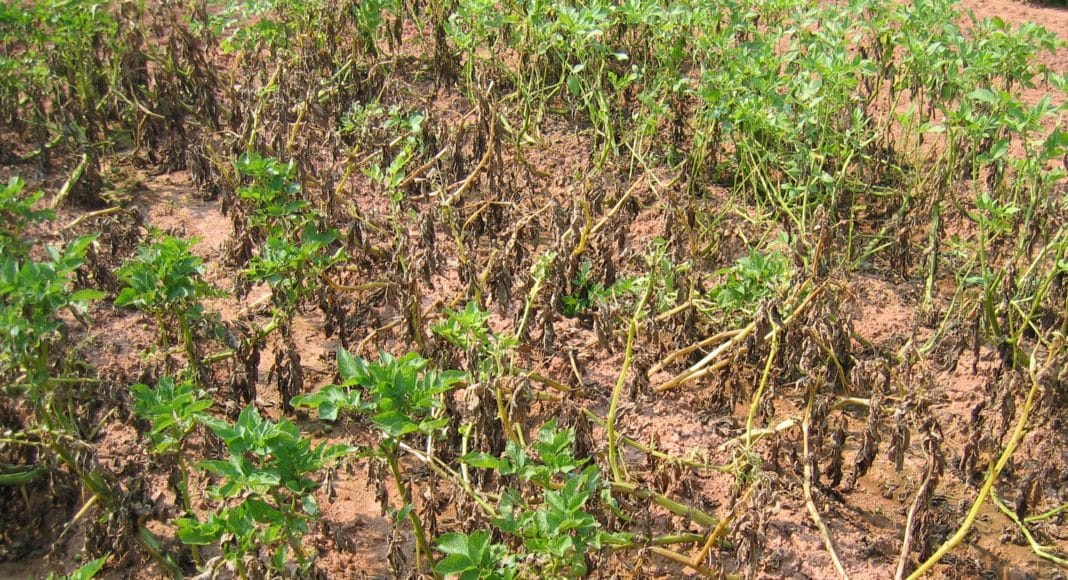A team of scientists at the United States Department of Agriculture (USDA) Agricultural Research Service (ARS) have found distant cousins of cultivated potatoes may hold new sources of resistance against late blight, the USDA says in a news release on March 2.
The team conducted laboratory trials where they exposed the leaves of 72 different species of wild potato to spores of the late blight pathogen Phytophthora infestans. ARS scientist Shelley Jansky, who is now retired, along with ARS research associate Hari Karki and Dennis Halterman, an ARS plant geneticist, looked into wild potatoes grown in Central and South America, and Mexico, where late blight originated, the release notes.
“Although most wild species make small potatoes that you would not want to eat, they could actually make you pretty sick, they exist in harsh natural environments without fertilizer, irrigation or pesticides,” notes Halterman in an educational video about his work.
In addition to adapting to diverse growing conditions, many wild potato species have defences against diseases such as late blight, the release says. This makes them an especially valuable resource for resistance genes which can help farmed varieties.
“Once we identify a species that contains resistance, our goal is to transfer that resistance into cultivated potato so that farmers can grow healthy crops using less pesticide,” Halterman explains.
Researchers are constantly looking for late blight resistance genes, this is due to the pathogen’s ability to mutate into new variants which can overcome a potato variety’s existing genes for protection against the disease.
Of the 72 total species the researchers examined in this study, 12 of them showed high levels of leaf resistance which had never been documented before — opening the door to entirely new defence mechanisms against late blight, the release notes.
However, developing potato varieties with new traits is a lengthy process, taking 10 to 15 years before they’re ready for market. Halterman is hopeful though with new approaches, such as marker-assisted selection, genome mapping and the ability to clone and insert specific genes of interest, prized traits like late blight resistance can be passed into promising new varieties faster and more efficiently, the release says.
Five of 12 stand-out species, S. agrimonifolium, S. albornozii, S. chomatophilum, S. hypacrarthrum and S. piurae, can be used in potato breeding programs immediately, the researchers reported in the December 2020 issue of the journal Plant Disease.











